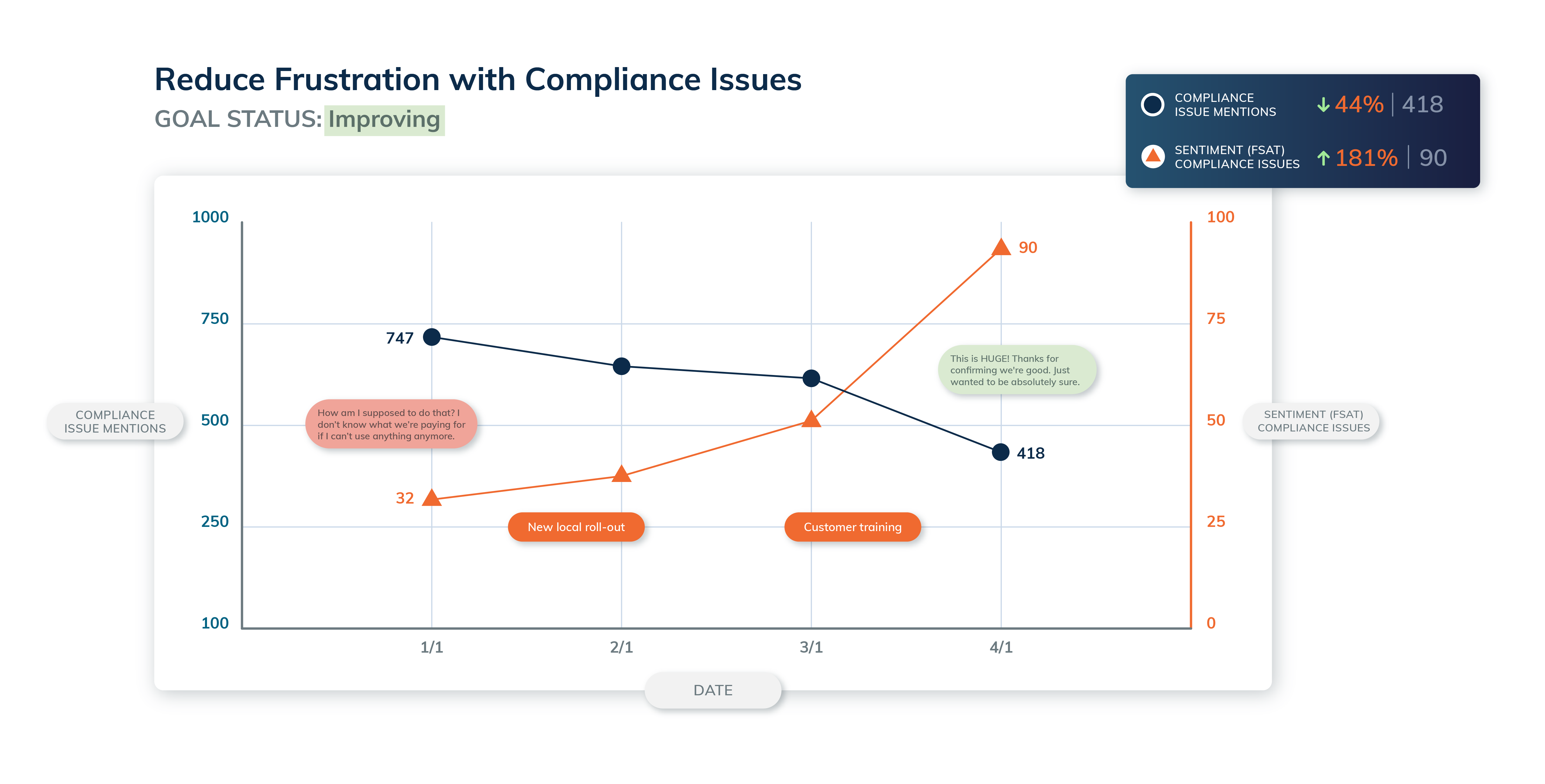History is full of infamously bad predictions. “Rail travel at high speed is not possible because passengers, unable to breathe, would die of asphyxia.” — Dionysius Lardner
“The horse is here to stay, but the automobile is only a novelty, not a fad.” — The president of the Michigan Savings Bank, advising Henry Ford’s lawyer not to invest in Ford Motor Company __
“The cinema is little more than a fad. What audiences really want to see is flesh and blood on the stage.” — Charlie Chaplin
Trying to predict the future is hard, especially when we’re talking about complex customer relationships. Your health score can help and should be able to do two core things: (1) alert you to smoke before there’s fire, and (2) help you understand what’s driving sentiment, effort and outcomes not just for individual customers, but aggregate segments of customers, to drive more customer-centric decision-making.
We recently discussed why sentiment and effort signals from unstructured organic feedback must be featured in customer health scores. When your customer relationships are your most important asset, it’s critical to seize any opportunity you have to get ahead of changes, especially at scale.
The ultimate goal of scoring customer relationship health is to avoid outcomes like churn or achieve outcomes like renewal and expansion — the day-to-day interactions your customers have with your business play a starring role in the outcomes you can expect. This means that health scores need to be as predictive as possible and be useful in both individual and aggregate contexts.
Is your customer health score dynamic enough to reliably predict the outcomes that your customers and your business care about? Here are two important questions to consider.
Can Your Health Score Alert You To Smoke Before There’s Fire?
Most Customer Success Managers oversee somewhere between 50 and 500 accounts, so Success teams use health scores to know which accounts need attention at any given time. The catch is the “ at any given time” bit — any CSM who’s been blind-sided by unexpected churn knows things can go sideways in the blink of an eye.
Maybe a support interaction is in danger of going off the rails. Perhaps multiple users from the same company are reaching out about the same issue. Or the same how-to question is coming up repeatedly, and the customer could benefit from some platform training. With demands on CSM time and attention only growing, it’s critical to know when proactive outreach can help save the day — ideally, your health score is dynamic enough to help trigger just that. A health score that captures sentiment, effort, and important themes across your customer interactions can help you flag issues that need your attention before they spiral into risks.

IsYourHealthScoringResponsive to Issues That Particular Customers Experience?
Health scores are important in an individual account context but should also surface trends across customer segments and your aggregate customer base. Otherwise, they aren’t helpful inputs to critical prioritization decisions CX teams need to drive, forecasting, and resource planning processes.
Imagine you work for an advertising technology company. You have a material customer contingent operating in a geographic region subject to more stringent privacy legislation, and they use a modified version of your product. Are they confident that your product can still help them reach acquisition goals? Or insecure about compliance risks? Tracking customer mentions of things like compliance issues and associated sentiment as part of their health score can help you ensure that your partnership is still providing value and that they won’t churn in favor of a more responsive competitor. Furthermore, they can help CX teams understand whether they need to prioritize new functionality, processes, or policies that will help these kinds of customers succeed. The ability to use health scores to understand the impact of themes on customer sentiment, effort, and outcomes helps you ensure the health of entire groups of customers, not just individual customers.

Predictive health scores (1) are as dynamic as your customer relationships (2) drive action and decision-making in an individual account context, as well as a customer segment and aggregate customer base context, and (3) are actionable in day-to-day account management as well as for decision-making, forecasting, and resource planning processes.
Frame AI brings predictive intelligence to health scores by measuring sentiment and effort and extracting actionable themes from every customer interaction in every channel. Our FSAT (Frame AI satisfaction) score automatically measures sentiment from every customer in every interaction and attributes it to discrete parts of your customer experience, so you know what’s moving the needle for which customers and why.
Don’t get caught making a bad future prediction. Talk to us to learn more about predictive health scores.


